
Why Bitcoin has Value
What Determines Value? Bitcoin is one of the most talked-about topics in finance, technology, and investment circles. But when you’re trying to explain why Bitcoin
Serving Churches, Charities, Missionaries, and Other Non-Profit Organizations.
We are a Non-Profit Organization that assists other non-profits in receiving digital assets as donations which can be converted to local currency, used for local purposes, or sent to missionaries around the world. Digital Assets can also be retained in accounts for income generating purposes.
We recommend that each non-profit organization set up a group of three or five individuals to act as an advisory committee. We then educate and advise the committee on how to receive and distribute digital assets to be used by the non-profit organization. We receive no money or fees for our service.
The Digital Asset we recommend receiving are U.S. Dollar Stable Coins (USDC), Bitcoin (BTC), and Ethereum (ETH). These assets are the top digital currencies at this time and are considered the most liquid and widely held. All of these digital assets use Blockchain technology which is described further in this website.
Special Services – Digital Asset Ministries is also available for individual families who have lost a loved one that was involved in managing digital assets for the family. In most cases, other family members (or business associates) are unfamiliar with digital asset management and therefore clueless on how to access digital asset accounts. Most people who understand the asset class follow best practices for security. As a result, knowledgable assistance may be needed to understand the system set up by the deceased person who controlled the digital asset accounts. We work closely with family accountants and legal representatives to make sure none of the security measures are violated. Our main goal is to maintain access to the digital assets so that family members can decide on what to do with those assets once they have been securely accessed.
Any organization can convert digital asset donations into U.S. Dollars during normal business banking hours and use the funds as part of their normal operations. This website describes this process in more detail.
Contrary to an uneducated popular opinion on this subject, less than 1% of worldwide digital asset transactions are deemed fraudulent by organizations who monitor blockchain activity. The same applies to news about digital assets being used to fund terrorism. Therefore, please do not let “Fake News” affect your judgement and remember the following:
First They Ignore You – Then They Laugh at You – Then They Attack You – Then You Win.
This is especially true of large banking institutions who are fighting decentralized cryptocurrency because they don’t want blockchain technology to draw finances away from the fractional reserve banking system. To be clear: there is a digital asset industry and there are players in that industry. Therefore, be careful not to judge an entire industry by a few bad players. This applies to the traditional banking industry as well. Don’t judge the industry when a few bad players misappropriate funds and pay fines for their illegal banking activities. All this being said, receiving digital assets as donations should be considered by all non-profit organizations — and the time to prepare is now.
CUSTODY: Digital Asset Ministries does not act as custodian for any digital assets. Nor does it collect fees for any assets donated to a non-profit organization. To the contrary, Digital Asset Ministries acts only as a consultant and advises non-profit organizations on how to enhance donations by receiving digital assets directly into their own accounts — and be used as deemed central to their cause.
Digital Assets can be converted to local currencies or used for other purposes. Digital Assets can also be easily transferred to other ministries through a worldwide de-centralized network for minimal transfer fees and rapid transaction times. This also applies to countries where many of its citizens are unbanked — but have Internet service.
About 1 billion people around the world used cryptocurrencies in 2022. About 46 million Americans (roughly 22% of the adult population) own a share of Bitcoin. By 2025, financial analysts say that the global blockchain market will grow by $39.17 billion US dollars.
Supporting Social Causes with Digital Currencies
Click on the image above to view an article about what crypto investors should know about supporting social causes with Digital Currencies. This article is also important for non-profit organizations looking to enhance donations by receiving and digital assets which can immediately be converted to local currencies.
Historically, the money supply in the United States has been controlled by the government and central banks. Prior to the 1970s, the U.S. Dollar was backed by gold, but after that, the U.S. Dollar was backed only by the word of the U.S. Government. As a result, if the government needed more money — they simply printed it. Because of this, the purchasing power of the “fiat” dollar (paper money) has reduced year over year. Moreover, our centralized government also controls interest rates. In other words, if the government prints excess money — which generally results in higher inflation — the government then raises interest rates to reduce the inflation they created. The main point here is that these decisions are made by a centralized entity and not by a consensus or majority of participants in the economy or community. In conclusion. the Central Bank model has negative consequences.
Blockchain technology was set in motion after the 2008 financial crisis. This crisis was caused by the failure of the centralized banking system. A blockchain is a decentralized and distributed ledger that records transactions across multiple computers or nodes. This is the opposite of a centralized computer or ledger system used by central banks.
A block is a link in a chain that is part of a chain network. It serves as a container for a set of transactions and other important data that is stored for transaction verification. The first “block” was mined in 2009 and set in motion the global adoption of blockchain technology. This first block was called the “genesis block” and it was mined by Satoshi Nakamoto.
Bitcoin was the original digital asset created by an individual (or team) name Satoshi Nakamoto. This effort was in response to the 2008 world financial crisis and they worked on the project up until December of 2010. According to Google: Bitcoin is a form of digital currency that aims to eliminate the need for central authorities such as banks or governments. To prevent centralization, Bitcoin uses blockchain technology to support peer-to-peer transactions between users on a decentralized network.
Ethereum is a decentralized blockchain platform created after the Bitcoin network and establishes a peer-to-peer network that securely executes and verifies application code called “smart contracts”. These contracts allow participants to transact with each other without a trusted (or not to be trusted) central authority. Both of these digital assets use separate blockchains directly related to that digital coin. For reference, BTC is a “Proof of Work” network and ETH is a “Proof of Stake” network described in more detail below.
USDC is a stablecoin (currently centralized) that is pegged in value to the U.S. Dollar. The centralized entity does this by holding “Reserves” contained mostly by government notes and bills. For reference, there are approximately 20,000 “Alternate Coins” (Not BTC) that are backed by developers building applications for future Web3 applications. Unfortunately, many of these “Alt” coins will fail and that is why we suggest using only Bitcoin, Ethereum, and a Stablecoin like USDC.

Bitcoin is supported by a Proof of Work (POW) blockchain that is decentralized and distributed. It is a public digital ledger used to record transactions across many computers around the world. This is done so that the record(s) cannot be altered retroactively without the alteration of all subsequent blocks — and the consensus of the network.” This is different than a centralized bank whereby all transactions are held on centralized computers owned by that bank. Since all banks are centralized, it is possible that a transaction could be changed at the bank level and there would be no consensus (or approval) needed by any other banks or individuals. The Bitcoin blockchain is maintained by “Miners” that compete for adding new blocks to the blockchain by solving very complicated mathematical problems. The miner who solves the problem and creates the new block is rewarded by earning Bitcoin as a reimbursement for the computer and electricity expenses needed to solve the problem.
With a Proof of Work network (or blockchain) like bitcoin, there are no rewards for simply owning individual BTCs. As such, Bitcoin is often referred to as a “Store of Value” or “Digital Gold”. This because the original developers of Bitcoin designed the protocol so that a maximum of only 21 Million Bitcoin will ever be mined. Once this occurs (around 2041) Bitcoin will become truly deflationary. Although Bitcoin can be used as a payment system, many Bitcoin owners believe the coin will grow in value because of its deflationary features, and therefore, they prefer to use it as a store of value rather than a payment vehicle. (We will talk about payment systems in a different section of this website.)

Ethereum – Ethereum has a different protocol than Bitcoin. It is a decentralized blockchain platform that establishes a peer-to-peer network that securely executes and verifies application code — called smart contracts. Smart contracts allow participants to transact with each other without a trusted central authority. Ethereum is supported by a Proof of Stake (POS) blockchain and functions similar to the Bitcoin blockchain. As mentioned earlier, “Blocks” on the Bitcoin blockchain are awarded to miners (similar to miners who mine for gold) who solve complicated mathematical problems to earn the right to verify transactions in that block. To clarify, Proof of Work (POW) with Bitcoin uses a competitive validation method to confirm transactions and add new blocks to the blockchain. The Ethereum blockchain, on the other hand, with a Proof of Stake (POS) protocol uses randomly selected validators to confirm transactions and create new blocks. In other words, when a block of transactions is ready to be processed, the cryptocurrency’s proof-of-stake protocol will choose a validator node to review the block. The validator then checks if the transactions in the block are accurate. If so, they add the block to the blockchain and receive crypto rewards for their contribution.
Staking Rewards – With a Proof of Stake protocol, owners of Ethereum can “Stake” their coins with a “Validator” who shares the rewards with the Ethereum owners participating in the stake. Reward tend to vary between 4% and 5% depending on the Validator or staking period.

A stablecoin is a type of digital asset issued by a private company and transferred through distributed ledger technology (also known as blockchain). Stablecoins were developed to facilitate crypto asset transactions and are generally pegged to a reference asset like the U.S. dollar. Since stablecoins like USDC have historically experienced much less volatility than digital assets like Bitcoin (BTC) or Ethereum (ETH), they can be ideal for payments and remittances. In fact, they are often favored by traders who wish to place profits made from trading in higher-volatility digital assets into more lower-volatility digital assets. Tether (USDT) is another asset-backed cryptocurrency stablecoin and was launched by the company Tether Limited Inc. in 2014. Tether Limited is owned by the Hong Kong-based company iFinex Inc., which also owns the Bitfinex cryptocurrency exchange. But again, our preference is USDC.
DISCLAIMER: Nothing in this Website is meant to be Financial Advice. Everything is meant to be educational in nature. We will never ask for passwords or keyword phrases to any digital account or storage wallet. Nor will we receive, store, or send any Digital Assets on anyone’s behalf. All consulting services are at no charge to a church, charity or non-profit organization.
In order to receive a digital asset, you first need to establish a digital asset account with a digital asset depository like Fidelity Investments, Kraken, or Coinbase. Once that account is established, you then need to copy the specific blockchain address for that asset so the “sender” knows where to send the asset to your digital asset account. You can also used an electronic wallet address but that is discussed in more detail below.
Digital Assets can be held on account at (for example) Fidelity Investments or a cold storage wallet for “self custody”. A cold wallet like Ledger or Trezor can be kept at home or the office with a password and “private keys” for security. These cold wallets can be attached to your computer for periodic transactions, but should be disconnected when not in use. This means there is no connection to the Internet when not in use.
Digital Assets can also be sent to vendors who accept digital currency or missions associated with the church, ministry, or non-profit organization . This is a very convenient payment system that is safe and secure and immediate. The digital assets sent will be confirmed on the asset blockchain within minutes and with very low transfer fees. A complete record of all transactions is kept in the system as well.
* Since 2008, the market value of Bitcoin has seen 4-year cycle patterns. The last few years has has been seen as a Bear Market which has now evidently bottomed. In April of 2024, however, Bitcoin will experience a “Halving Event” which in the past has caused BTC to increase in value considerably. In addition, it is generally agreed that a “Spot” Bitcoin ETF will be approved by the Securities & Exchange Commission (SEC) somewhere between October of 2023 and April of 2024. If a spot ETF for Blackrock, Fidelity Investments, and others is approved, it is possible that there will be a significant influx of institutional capital entering the Bitcoin market. And this could increase the value of Bitcoin substantially. If this does occur, the future will be bright for Bitcoin, and if tax harvesting occurs, considerable amount of digital assets may be directed to charitable institutions. So, now is the time to prepare.
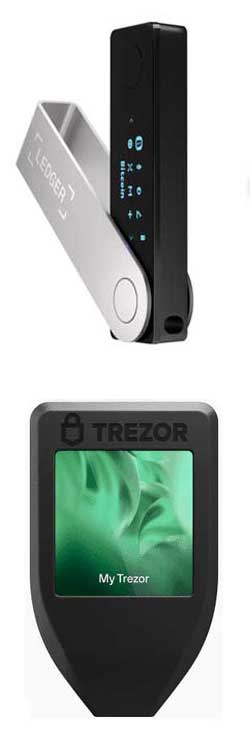
There are numerous ways to store Digital Assets for safe-keeping. Generally speaking, the most common way of receiving Digital Assets is to Receive an asset from a Sender (or Donator to your cause). When you receive a Digital Asset, you can basically receive the asset in two ways. First is your depository account which can be held in a brokerage firm like Fidelity Investments or on a Cryptocurrency Exchange like Gemini, Kraken, or Coinbase, etc. Second is your Cold Storage Wallet like the Ledger or Trezor (displayed to the left). The cost of these wallets range from around $70 to $250. Quite simply, you set up your cold wallet by using a Password and also 12 to 24 key phrase words to be used to restore you wallet if lost or damaged. This is all done by computer software that talks to your cold wallet when it is plugged to a USB port. When done approving send and receive transactions, the cold wallet is disconnected from your computer to be held in a safe and secure place. (For reference: your actual Digital Assets are stored in the blockchain, but the password and key phrases associated with your cold wallet are needed for approval to send or receive the digital assets that you own on the blockchain).
If, for example, you receive a digital asset directly to your cold wallet and you want to convert the asset to U.S. Dollars, you would then need to transfer the digital asset to your Brokerage Account and make the transfer there. You would then make a request to have the fiat cash transferred to your bank account on file at the brokerage.
CAUTION: Do not accept a Cold Wallet as a donation because it may have been compromised. In other words, if someone else has the password or private keys (key word phrases) to that cold wallet, they may have access to the funds stored on that wallet. It is always best to purchase a cold wallet from a trusted source and not accept a wallet donation.
Once digital assets are received and stored in a Cold Wallet, decisions need to be made on what to do with those assets.
Example – If cash is needed, then the asset(s) needs to be sent to your brokerage account, like Fidelity Investments, to be converted into cash at the current exchange rate. You will then need to ask for the cash proceeds to be transferred to your bank account on record with them. On the other hand if you would like to exchange one digital asset for another, you would then have to send the asset to your brokerage account at Fidelity Investments or other Cryptocurrency Exchange. As an example, if you would like to exchange some Bitcoin for Ethereum so that you can earn income by staking Ethereum, you would then send your BTC to the BTC address at your exchange. Once received by them, you can then exchange one asset for another. If your intent is to purchase ETH for staking purposes, you would most likely keep the ETH on that exchange or transfer the asset to a Node Validator. (Someone on our team would be able to walk you through that process to get you started.
Note – If the asset you purchase or exchange is not to be Staked for income purposes, we then recommend that you transfer your new digital asset back your your Cold Wallet for secure storage.
CAUTION: We highly recommend that no digital assets be kept in a brokerage account or cryptocurrency exchange. These companies are “Centralized” and could be susceptible to mis-management or fraud. This is obviously different that leaving stocks with your brokerage account… because these assets are not yet digital and cannot be transferred through a blockchain network.
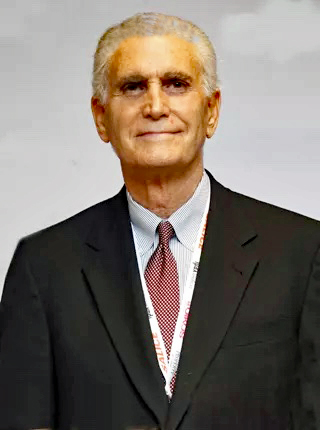
Stay up to date on digital asset trends for donations and charitable giving. Please let us know if you would like to know more specific information or you would like consultation on how to receive digital assets as donations to your organization.
For 37 years, William Holden was an airline pilot. He started with Trans World Airlines (TWA) and spent the last years of his career with American Airlines. During this time as an airline pilot, he was also a real estate developer in Vail, Colorado, USA (1972 to 1986). From 1986 to 2001, William was an appraiser in St. Louis, Missouri, USA where he did investment analysis on shopping centers, office buildings, and industrial office warehouses. He also analyzed residential apartment properties. From 2001 to 2005, he had an asset management company and provided investment analysis as a registered investment adviser with a Series 7 securities license. He was introduced to digital assets when a buyer of his beachfront condominium for sale in the Dominican Republic offered to pay in cryptocurrency. For the past year, William has been a student of digital assets and is now a consultant for non-profit organizations.
Stay up to date on digital asset trends for donations and charitable giving. Please let us know if you would like to know more specific information or you would like consultation on how to receive digital assets as donations to your organization.

What Determines Value? Bitcoin is one of the most talked-about topics in finance, technology, and investment circles. But when you’re trying to explain why Bitcoin

This articles contains step-by-step instruction on how to buy a Bitcoin EFT on Fidelity.

Bitcoin has been historically volatile but the price trend has always been up and to the right.
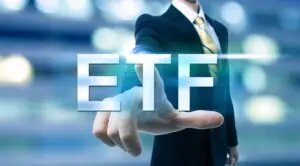
The advent of Exchange-Traded Funds (ETFs) offers a newer, potentially more accessible way to invest in digital currencies.

Unveiling The Future of Online Interaction and Shopping (4 Minute Read) Twitter Linkedin The Basics of Web3 Web3 is a concept for a decentralized internet built

How to Recover Digital Assets Held by a Deceased Family Member (9 Minute Read) Twitter Linkedin The sudden loss of a family member is an

How to Receive Cryptocurrency as Rental income (8 Minute Read) Twitter Linkedin In the digitally-driven world that we inhabit, cryptocurrency has sprouted from an enigmatic

Attending a concert is not just about enjoying the music; it’s an opportunity to support the artists and organizations that bring us joy through their performances.

As the world becomes increasingly digital, so too does the realm of philanthropy. Non-profit organizations rely on donations to drive their missions and make a positive impact on society. Traditionally, donations have come in the form of cash, checks, or even physical assets. However, with the rise of cryptocurrencies and other digital assets, a new avenue for giving has emerged.

Practical Uses of Digital Assets? (3 Minute Read) Twitter Linkedin Support Churches & Charities There is a direct relationship between use case and value. As
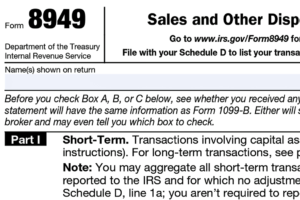
Software to Use for Accounting and Portfolio Management? (3 Minute Read) Twitter Linkedin When transacting in cryptocurrency, there are various software options to keep track

(The image above represents the current status of Bitcoin on 18 September 2023 and may not be current today). Videos Discussing Current Digital Asset Markets?
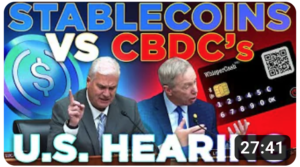
Video Updates on Cryptocurrency Regulations? (3 Minute Read) Twitter Linkedin The posts below include regulation update videos on what’s happening in the United State congress

Brief Educational Videos on Cryptocurrency and Other Digital Asset? (3 Minute Read) Twitter Linkedin These posts includes educational videos that may help in understanding the
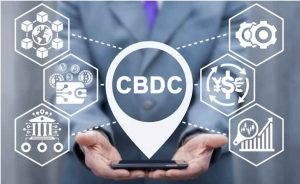
Explanation of Central Bank Digital Currencies? (3 Minute Read) Twitter Linkedin A CBDC is a dystopian central bank digital currency. It is a new type of money

DA Ministries also consults on Digital Assets for Missions both locally and around the world. Although many charitable organizations prefer to convert Digital Asset donations
© 2022 All Rights Reserved.